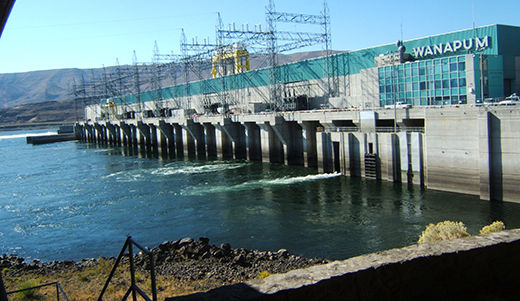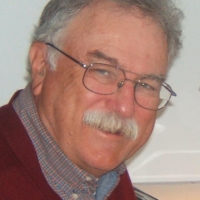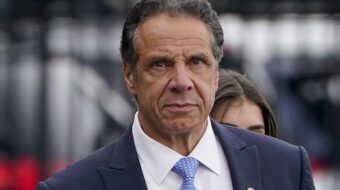
SEQUIM, WA-Not for a long time has there been such a need for increased public spending to create jobs and rebuild infrastructure, not least here in Washington State saddled with 9.2 percent joblessness.
Yet right-winger, Tim Eyman, has placed on the Nov. 3 ballot a referendum, I-1033, that would force even deeper spending cuts than those already imposed across the Evergreen state. The plunge in consumer purchases has meant a collapse in sales taxes, the state’s main source of revenues.
I-1033 would freeze state, county, and municipal budgets at the previous year’s level plus population growth and the national inflation rate.
A coalition of 60 organizations including the AFL-CIO, the American Association of Retired Persons (AARP), the Washington Education Association, Sierra Club, the Greater Seattle Chamber of Commerce, and Microsoft, has come together to fight I-1033.
The non-partisan Office of Financial Management warns that I-1033 would slash $2.8 billion in revenues that state, county, and local governments use to “keep our communities healthy, safe and clean.” AARP estimates that “40,000 Washington residents of all ages may lose Basic Health Plan coverage” if voters approve I-1033 on November 3, 2009. Here on the Olympic Peninsula, people are standing at street corners holding signs that proclaim, “Vote No on I-1033.”
Eyman promotes the poisonous right-wing ideology that public programs are evil and the quicker they are privatized the better. Yet Washington state is a living testament of the opposite: public works projects and public service have been the engine of economic growth, a generator of jobs and prosperity
.
This reporter toted up a list of the public works projects either completed or begun in Washington since we arrived six months ago:
• Seattle opened its light rail system, easing traffic congestion, reducing the city’s “carbon footprint” while generating hundreds of union-wage jobs.
• The keel was laid at Todd Shipyards for a new 64-car ferry for the Port Townsend-Keystone run, one of twenty auto ferries in the Washington State Ferries (WSF) fleet. Todd has just won the bid to build two more ferries, a lifeline for shipbuilding that employs thousands in the Puget Sound region.
• The ribbon was cut on a new bridge across the Elwha river replacing the single-lane span built in 1914. The lower deck is a pedestrian walk-way, part of the Discovery Trail that follows old abandoned railroad right-of-ways. When completed, it will stretch well over 100 miles from Port Townsend to Forks and on to Lapush.
• Preparations are underway to take down two dams on the Elwha, an effort to restore the salmon and steelhead fish that once teemed in the river. This project was speeded up by an entire year when millions from the Obama stimulus package was earmarked for the dam removal.
• A leader of the Salmon Coalition on the Olympic Peninsula hailed Obama’s package. They were able to hire nearly 50 young people in restoring spawning beds in rivers this summer, a mini-CCC project. There were unusually large runs of pink, silver, and king salmon in the rivers this fall.
Kaleen Cottingham, Director of the Washington State Office of Recreation and Conservation, a speaker at the Elwha bridge ribbon-cutting told the World, “These projects only work with strong commitment of local communities. This community loves the Discovery Trail. We have 21 different grants that have provided $5 million to help build this 100 mile trail. Once they are ready to launch the salmon recovery project, we will be there as well. Already, some of the federal economic stimulus money has been provided.”
Last week, we visited the “mother” of all public works projects, Grand Coulee Dam. Woody Guthrie described it as the “mightiest thing ever built by man, to run the great factories and water the land.”
It generates enough electricity to supply two cities the size of Seattle, all of it free of greenhouse gases. Water from Lake Roosevelt behind the dam irrigates half a million acres that supplies the nation with some of the sweetest fruits and vegetables. Grand Coulee Dam and more than 30 other dams on the Columbia River and its tributaries has powered the development of the entire Pacific Northwest generating tens of thousands of jobs. It also provides electricity to households through Public Utility Districts (PUD) that is cheap and reliable. It is all publicly owned, creeping, or should we saying galloping “socialism” that enrages the tea-baggers.
The dams came with a heavy cost: wiping out the salmon and steelhead runs that once spawned upriver from Grand Coulee Dam, ending a way of life for the Native American Indians united in the Colville Confederation. Redressing those injustices means restoring the salmon and steelhead runs. In some cases, it means removing the dams.
That too will require billions in public funding. We stopped at the Wanapum Dam further down the Columbia operated by the Grant County PUD. Susan Parker, docent at the Wanapum Interpretive Center, told us people are being paid wages to count the salmon and steelhead swimming up the fish ladders beside these dams. Engineers, she said, are working to redesign the turbine blades in the generators so the salmon fry can swim through them unharmed. Saving the salmon may turn out to be as labor intensive as building the dams. But it is an investment that will pay huge dividends.
That project is put at risk by Eyman and other “fiscal hawks” who know the price of everything and the value of nothing. Vote No on I-1033. It is a vote to save the salmon.
Photo capition: View of the Wanapum Dam, named for the Wanapum Native American Indian nation that lived along the banks of the Columbia River.










